When it's time to choose a road cycle frame, the conversation often jumps straight to carbon fiber. But what if the smarter, more rewarding choice has been here all along? While the lower price of an aluminum road frame is a well-known advantage, the real benefits go much deeper. Modern alloys like those used in the Trifox R241 frameset offer a compelling mix of performance, character, and value that deserves a closer look.
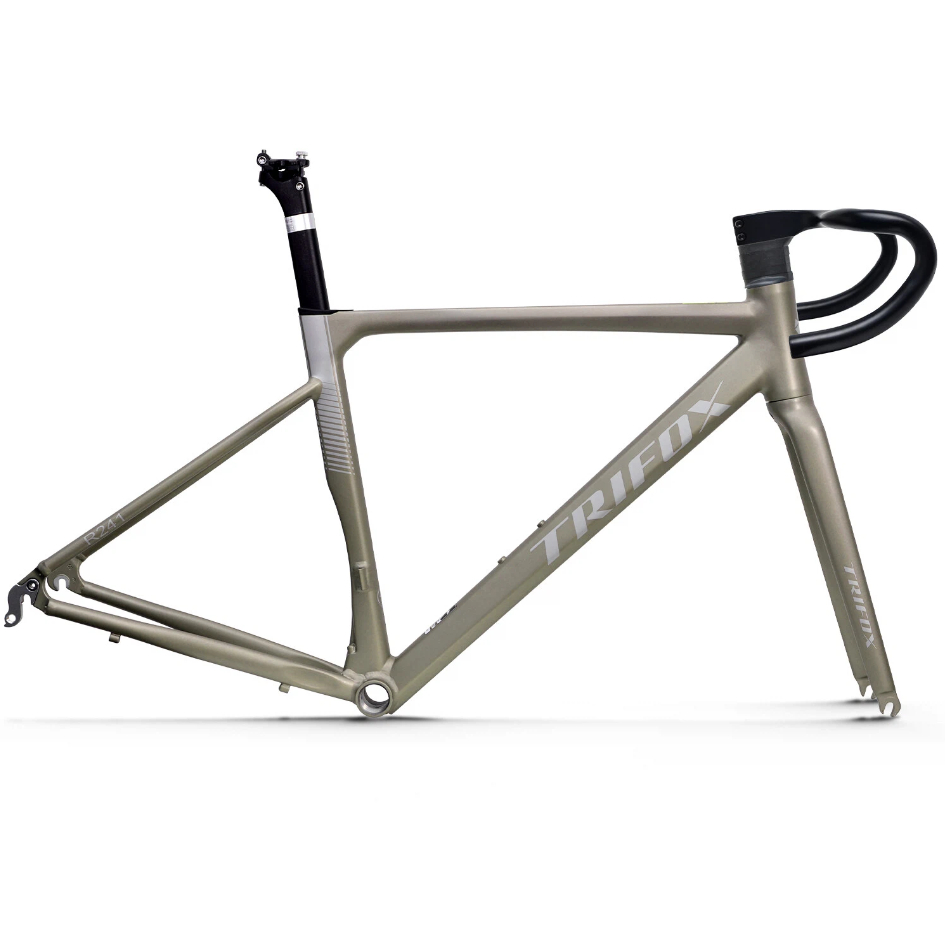
Benefit 1: Legendary Durability and Reliability
For riders who demand a worry-free companion, aluminum road bike frames are exceptionally durable. Unlike carbon, which can be susceptible to impact damage and requires careful handling, aluminum is inherently robust. It can withstand the minor knocks and stresses of daily use, transport, and even the occasional mishap. This makes a frame like the R241, crafted from 6061 aluminum alloy, a perfect "forever frame" or an ideal choice for a dedicated training bike that you can rely on in all conditions.
Benefit 2: A Lively and Responsive Ride Feel
This is where aluminum road frames truly shine. Aluminum has a distinct stiffness that translates to instant power transfer. When you stomp on the pedals, the frame flexes minimally, putting more of your energy directly into forward motion. This creates a lively, snappy, and responsive feel that many riders love, especially for spirited group rides, sprinting, and climbing. It’s a raw, connected sensation that makes you feel every watt of effort is being used efficiently.
Benefit 3: The Perfect Platform for High-End Components
An aluminum road frame like the Trifox R241 offers a brilliant strategy for building a high-performance bike without the high-performance price tag. By investing the money you save on the frame into better components—such as a lighter wheelset, a more precise groupset, or a more comfortable cockpit—you can create a machine that outperforms a pre-built bike with a carbon frame but mediocre parts. The frame becomes the reliable, high-quality foundation for your dream build.
Benefit 4: Surprisingly Refined Modern Engineering
Forget the harsh, jarring ride of old aluminum bikes. Modern hydroforming technology, used in crafting the R241, allows tubes to be shaped into complex, aerodynamically optimized profiles. This means engineers can design frames that are stiff in the bottom bracket for efficiency but tuned in the seat stays and fork to dampen road vibrations. The result is a ride quality that is crisp and efficient, yet far more comfortable than you might expect.?
More Than Just a Budget Option
Choosing an aluminum road frame is not about settling for less; it's about choosing a different set of advantages. It’s a decision that prioritizes durability, a lively and engaging ride character, and smart value that allows for upgrades where they count most.
The Trifox R241 Aluminum Frameset embodies all these benefits. It’s a testament to how far aluminum road bike technology has come, proving that you don't have to sacrifice performance for practicality. It’s the perfect foundation for a responsive, reliable, and incredibly rewarding road machine.
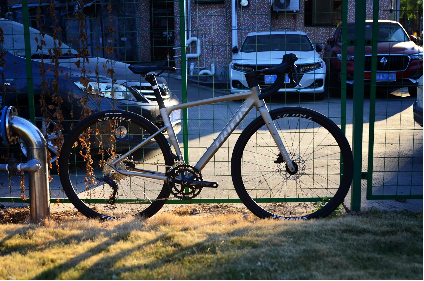

Discover the Trifox Trail II Pro full suspension mountain bike frame. This lightweight XC carbon 29er features modern geometry, efficient suspension, and the SRAM Universal Derailleur Hanger (UDH) for a truly future-proof build.
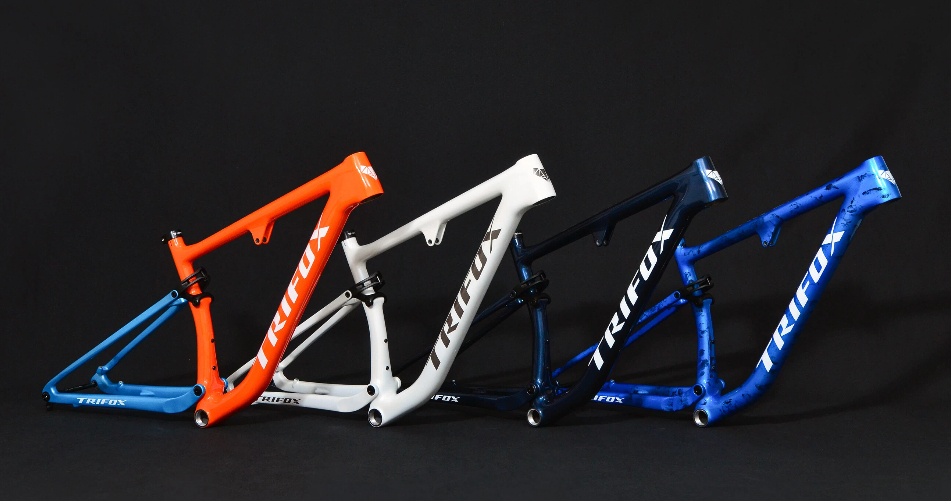
The Evolution of the Trail Slayer
In the relentless pursuit of speed and control, the full-suspension mountain bike stands as the ultimate engineering marvel. It's a machine designed to tame chaos, offering traction and compliance where a hardtail simply can't. But in a rapidly evolving component landscape, how do you ensure your new dream build won't be obsolete in a few years?
The answer lies at the heart of the Trifox Trail II Pro Full Suspension MTB Frame. This isn't just another carbon frame; it's a thoughtfully engineered platform built for the trails of today and the technology of tomorrow. By integrating a high-pivot full suspension design, a lightweight carbon fiber 29er construction, and the industry-standard SRAM Universal Derailleur Hanger (UDH), the Trail II Pro delivers truly future-proof performance.
The Heart of the Beast: XC-Optimized Full Suspension
At the core of the Trail II Pro's capability is its sophisticated full suspension system. Designed with cross-country (XC) and trail riding in mind, it strikes a perfect balance between efficiency and control.
1. Efficient Pedaling Platform: The suspension kinematics are tuned to minimize "bob" when you're putting power down on the climbs or sprinting on flat ground. This means more of your energy is converted into forward motion, not lost to suspension movement.
2. Superior Traction and Control: When the trail points downhill, the frame comes alive. The full suspension system actively keeps the rear wheel in contact with the ground, absorbing bumps and roots to provide unparalleled traction and control. This allows you to carry more speed through rough sections with confidence.
3. Lightweight Carbon Chassis: Crafted from high-modulus carbon fiber, the main frame and swingarm are both incredibly stiff and remarkably light. This reduces the overall weight penalty often associated with full-suspension bikes, resulting in a lively, responsive ride that feels agile on climbs and precise on descents.
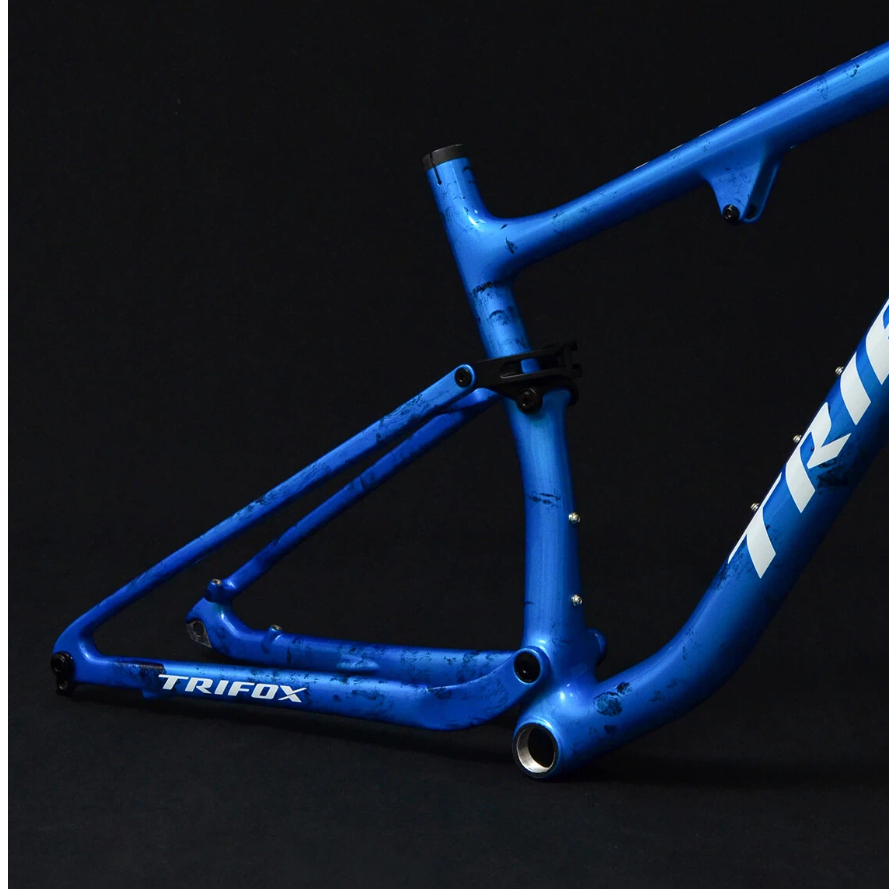
The Geometry of Confidence: 29er Wheels Meets Modern Design
The Trail II Pro is built around 29-inch wheels, leveraging their legendary roll-over ability and momentum-carrying prowess. The frame's geometry is meticulously crafted to harness these benefits:
1.Stability at Speed: A moderately slack head angle and longer wheelbase provide a confident, stable feel when descending, instilling confidence when the terrain gets steep and technical.
2. Agile Climbing: Despite its stability, the chainstay length and seat tube angle are optimized to keep the front wheel planted and the rider centered during steep climbs, preventing the bike from feeling sluggish.
3. Boost Spacing: The frame features 148x12mm Boost rear spacing, which increases wheel stiffness and improves tire clearance, allowing for wider, more aggressive rubber—a must for modern trail riding.
The Future-Proof Upgrade: Why the UDH is a Game-Changer
While the suspension and carbon frame are the stars of the show, the inclusion of the SRAM Universal Derailleur Hanger (UDH) is what makes the Trail II Pro a genuinely smart long-term investment.
Universal Compatibility for Ultimate Flexibility: The UDH is an industry-adopted standard. This means it's designed to work seamlessly with a vast range of derailleurs, most critically, SRAM's current and future Eagle Transmission (AXS) groupsets. Whether you're building with a mechanical groupset today or planning to upgrade to wireless shifting tomorrow, the Trail II Pro is ready. No more worrying about sourcing a rare, proprietary hanger.
Built-in Crash Protection: Mountain biking is tough on equipment. The UDH is engineered to be the weakest link in the drivetrain. In a crash or impact, the inexpensive hanger is designed to break before your expensive derailleur or frame does. This simple, intelligent design can save you from costly repairs and downtime.
Simplifying Your Life: The standardization of the UDH means replacement hangers are widely available from numerous brands and retailers. You can ride with peace of mind, knowing that a replacement is just a click or a short trip to the local bike shop away.
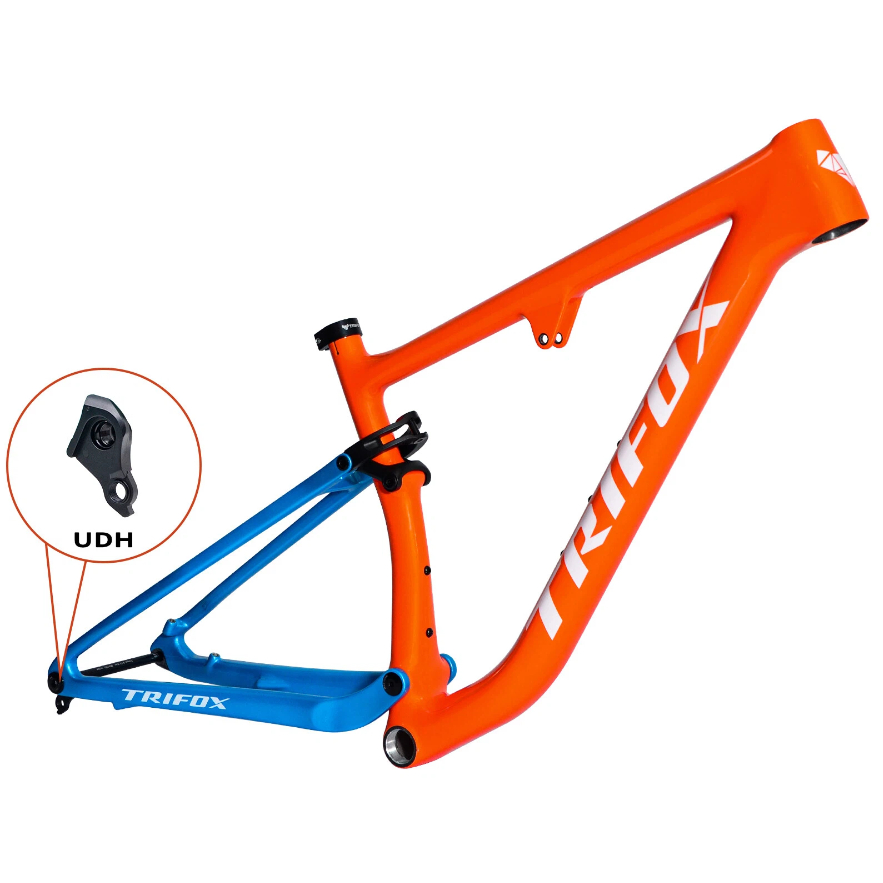
Who Is The Trifox Trail II Pro Frame For?
This frame is the perfect foundation for:
The Discerning XC/Trail Rider: Wants the efficiency of a carbon frame with the control of full suspension to tackle a wide variety of terrain.
The Tech-Forward Builder: Plans a custom build and demands a frame that is compatible with the latest components, including wireless drivetrains.
The Upgrader: Moving from an older, heavier, or outdated full-suspension bike and seeking a modern, lightweight platform with contemporary standards.
The One-Bike Quiver Builder: Looking for a single frame that can be built up to be a capable race machine one day and a rugged trail explorer the next.
Build Your Next Adventure on a Foundation That Lasts
The Trifox Trail II Pro Full Suspension MTB Frame is more than just a collection of carbon and bearings. It's a holistic approach to modern mountain bike design. It delivers the exhilarating performance of a lightweight carbon 29er with the composed confidence of a tuned full suspension system, all while being secured for the future with the UDH.
It’s a frame that empowers you to build the bike you want today, with the confidence that it will remain compatible and relevant for years to come. Don't just build a new bike; build a lasting partnership with the trail.
Ready to experience future-proof performance? Explore the Trifox Trail II Pro Full Suspension Frame and start planning your ultimate build today.
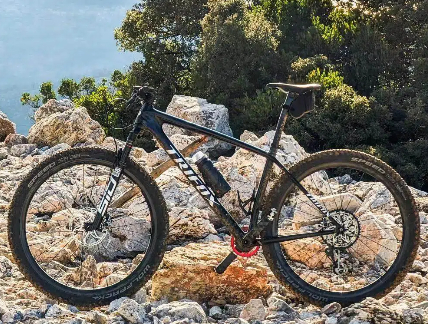
Discover the Trifox SDY20 carbon MTB frame. This lightweight 29er hardtail frame combines a stiff, efficient carbon layup with the modern SRAM Universal Derailleur Hanger (UDH) for unparalleled performance and compatibility. Perfect for XC and trail riders.
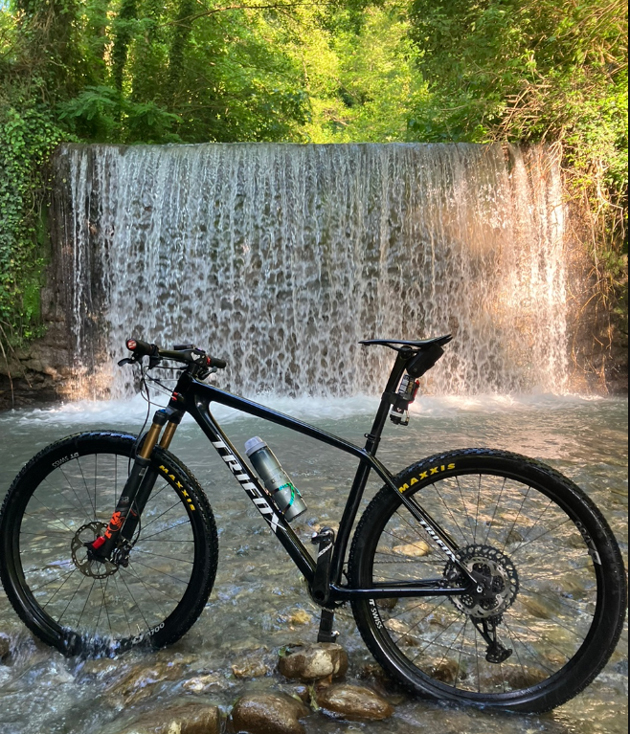
The Quest for the Perfect Hardtail
In the world of mountain biking, the hardtail holds a special place. It’s a pure, direct connection between rider and trail, rewarding skill and fitness with unmatched efficiency. But not all hardtails are created equal. The modern rider demands a frame that is not only stiff and lightweight but also future-proof, ready to accept the latest components without compromise.
Enter the Trifox SDY20 Carbon MTB Hardtail Frame. This frame is engineered from the ground up to meet these exact demands. By fusing a high-performance carbon fiber 29er design with the game-changing SRAM Universal Derailleur Hanger (UDH), the SDY20 isn't just another frame—it's a smart, long-term investment for discerning riders.
A Deep Dive into the SDY20's Carbon ChassisAt the heart of any great frame is its material and construction. The SDY20 is meticulously crafted from unidirectional carbon fiber, a process that places each strand of carbon in a specific direction to optimize strength and stiffness where it's needed most.
Unmatched Stiffness: The primary benefit of this advanced carbon layup is phenomenal power transfer. When you put power into the pedals, the SDY20 translates it directly into forward motion with minimal flex. This results in explosive acceleration and climbing efficiency that will make you feel stronger on every ride.
Feather-Light Weight: Carbon fiber's incredible strength-to-weight ratio means the SDY20 frame is remarkably light. Shedding weight from the frame, the largest single component of your bike, has a dramatic effect on overall ride feel, making the bike more agile and easier to handle, especially on technical climbs..
29er Performance: The frame is designed exclusively for 29-inch wheels, the current gold standard for mountain biking. Larger wheels roll over obstacles with greater ease, maintain momentum better, and provide increased traction and confidence through rough sections. The SDY20’s geometry is optimized to harness all the benefits of the 29er platform.
The Game-Changing Upgrade: Why the UDH MattersThis is where the Trifox SDY20 truly separates itself from the pack. The inclusion of the SRAM Universal Derailleur Hanger (UDH) is more than a minor spec update; it's a fundamental shift in compatibility and durability.
Universal Compatibility: As the name suggests, the UDH is an industry-standard hanger. It’s designed to work with an enormous range of derailleurs, most notably SRAM's current and future Eagle Transmission (AXS) groupsets. This means your SDY20 frame is ready for the latest wireless shifting technology right out of the box. No more searching for proprietary, model-specific hangers.
Enhanced Durability & Protection: The UDH is designed to be a sacrificial component. In the event of an impact to your rear derailleur, the UDH is engineered to break before the much more expensive derailleur or frame does. This simple, smart design can save you hundreds of dollars in repairs and is a critical feature for any mountain bike that sees real trail use.
Future-Proofing Your Investment: By building your bike around a frame with a UDH, you are ensuring that it will be compatible with the vast majority of drivetrain upgrades for years to come. The UDH is quickly becoming the new norm, and the SDY20 puts you on the right side of that evolution.:
Built for Modern Standards: More Than Just UDHThe forward-thinking design of the SDY20 extends beyond the derailleur hanger. This frame is built to accommodate the best modern components.
Boost Spacing (148x12mm Thru-Axle): Boost hub spacing increases wheel stiffness and strength, providing better alignment for wider tires and improving handling precision.
Modern Geometry: The frame features a contemporary geometry that strikes a perfect balance for XC and trail riding. It provides a confident, stable stance on descents while remaining agile and responsive for climbing and technical maneuvers.
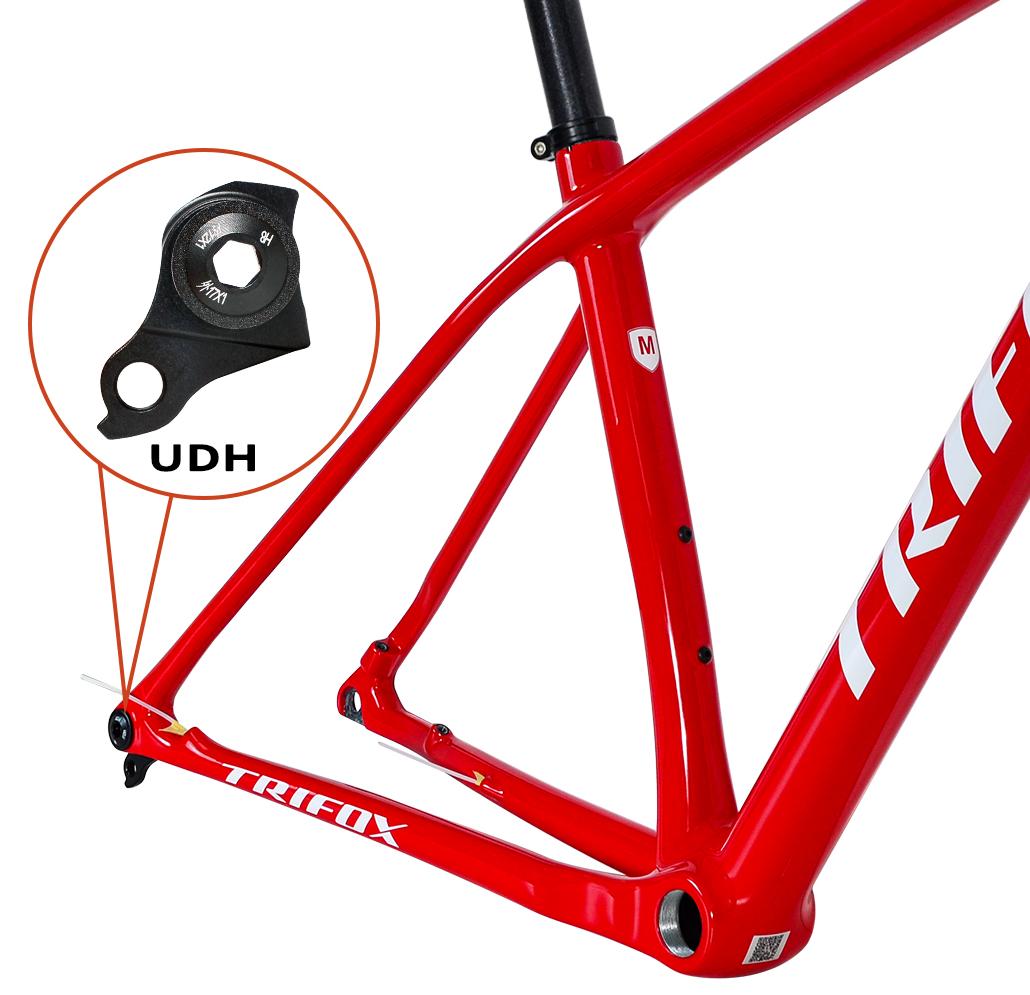
Who Is The Trifox SDY20 Carbon Frame For?
This frame is the ideal foundation for:
The Weight-Conscious Racer: Looking for every possible advantage in stiffness and weight savings.
The Trail Enthusiast: Wants a lively, efficient, and modern hardtail that can tackle a variety of terrain with confidence.
The Tech-Savvy Builder: Planning a custom build and wants a frame that is compatible with the latest and greatest components, including wireless groupsets.
The Upgrader: Seeking to move from an older aluminum frame to a high-performance carbon platform without sacrificing future compatibility.
A Frame Ready for Tomorrow's TrailsThe Trifox SDY20 Carbon MTB Hardtail Frame is a masterclass in modern bicycle design. It doesn't force you to choose between a stiff, lightweight carbon chassis and future-proof compatibility. It delivers both in one elegant package.
By combining the race-winning performance of its 29er carbon frame with the industry-standard SRAM UDH upgrade, the SDY20 offers a compelling value proposition. It’s a frame that feels incredible to ride today and is smartly equipped for the innovations of tomorrow.
Ready to build your dream hardtail? Explore the Trifox SDY20 Carbon Frame and discover the perfect balance of weight, stiffness, and modern technology.

Embarking on the journey to build your dream cross-country (XC) mountain bike is an exciting endeavor. At the heart of this project lies the most critical decision: selecting the perfect frame. A 29er XC full suspension carbon frame represents the ultimate fusion of speed, efficiency, and control, designed to conquer demanding trails while remaining lightweight and responsive.
But with a myriad of options available, how do you ensure you're making the right choice? This comprehensive guide will walk you through the essential factors to consider, using the exemplary TRIFOX Trail II Pro Full Suspension Carbon MTB Frame as a benchmark for what a top-tier frame should offer.
1. Geometry: The Blueprint of Performance
The geometry of a frame is the DNA of your bike's handling characteristics. For modern XC and downcountry riding, the goal is a blend of aggressive climbing efficiency and confident descending stability.
Head Tube Angle (HTA): A slacker HTA boosts stability on technical descents. The TRIFOX Trail II Pro features a 67.5-degree head angle, which is progressive for an XC frame, providing increased confidence when the trail turns downward.
Seat Tube Angle (STA): A steeper STA positions the rider optimally over the bottom bracket, enhancing climbing efficiency and power transfer. The Trail II Pro's 75.5-degree seat angle ensures you can tackle steep climbs effectively.
Reach and Stack: These measurements define your cockpit space and riding posture. Modern geometries tend toward longer reach and lower stack for improved stability and a more aerodynamic riding position.
Why it matters: The right geometry ensures the bike feels intuitive and responsive. The Trail II Pro's geometry strikes a perfect balance, making it adept at both winning races and tackling technical trail features.
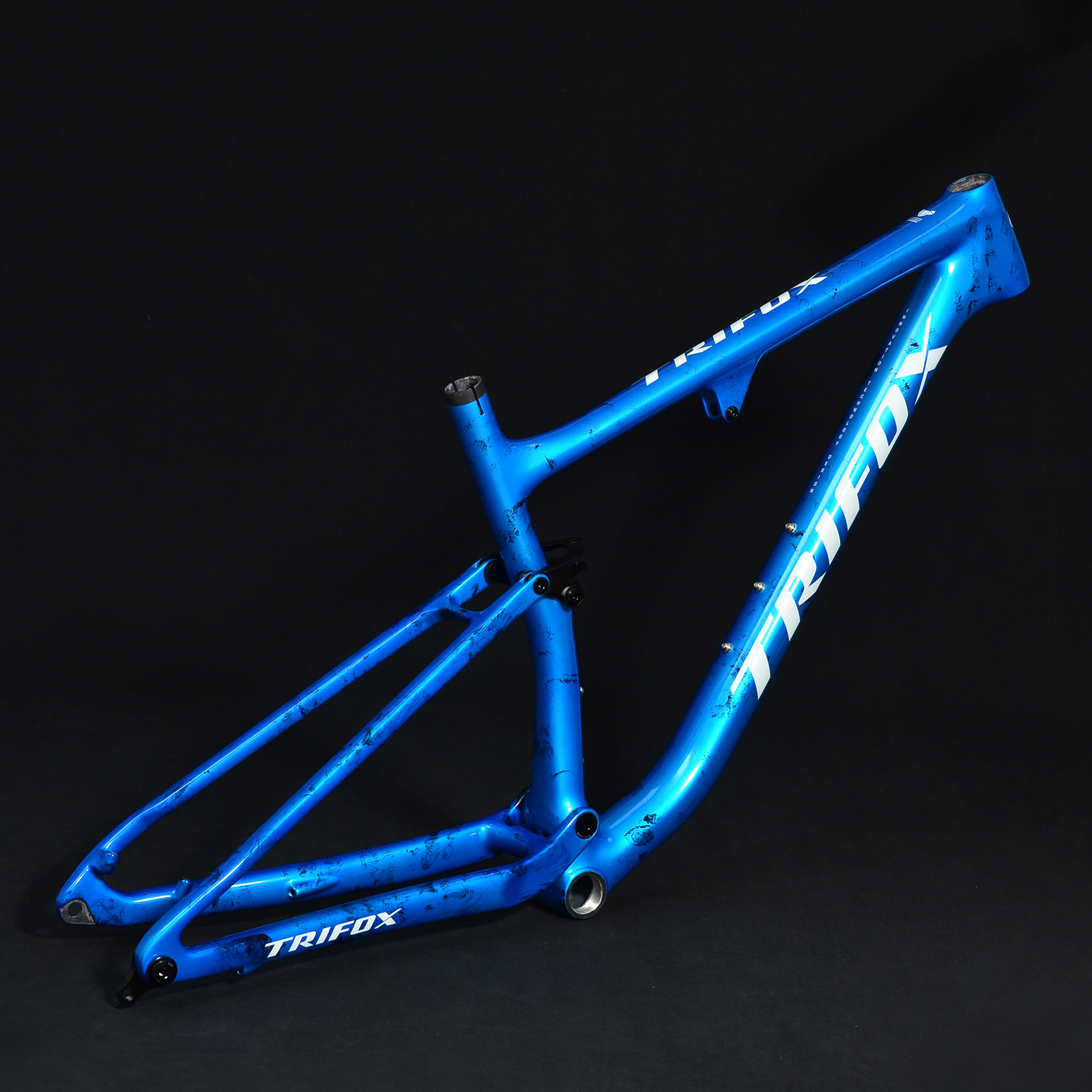
2. Suspension Design: The Heart of the Ride
A full-suspension XC bike must offer traction and comfort without compromising pedaling efficiency. The design of the suspension linkage is paramount.
Linkage Type: The TRIFOX Trail II Pro employs a highly efficient four-bar suspension system. This design is renowned for its ability to minimize pedal bob, ensuring that your energy is directed into forward momentum rather than being absorbed by the suspension.
Travel: For XC purposes, 35-45mm of rear travel is the gold standard. It provides sufficient absorption for rough terrain and maintains grip without sacrificing the snappy, efficient feel essential for climbing and acceleration. The Trail II Pro is designed around this ideal 35-45mm of travel.
Anti-Squat and Kinematics: Advanced suspension kinematics with high anti-squat values keep the frame taut under power, translating to efficient pedaling—a non-negotiable trait for any serious XC frame.
3. Carbon Fiber Quality: Where Engineering Meets Art
The grade and construction of the carbon fiber directly influence weight, stiffness, compliance, and overall durability.
Carbon Grade: Look for frames utilizing high-modulus carbon fibers. The TRIFOX Trail II Pro is crafted from T800 carbon fiber, a premium material that allows for an exceptional strength-to-weight ratio. This results in a frame that is both incredibly light and impressively robust.
Layup Process: The artistry of carbon frame building lies in the layup. Precision hand-laying allows engineers to tailor the flexibility and stiffness in specific areas. The down tube and bottom bracket can be reinforced for stiffness and power transfer, while the seat stays can be designed to offer vertical compliance, smoothing out trail vibrations.
Why it matters: A high-quality carbon frame like the Trail II Pro delivers a ride quality that is stiff and responsive when you stamp on the pedals yet surprisingly comfortable over long, rugged distances.
4. Modern Features and Compatibility: Future-Proofing Your Investment
A modern frame must adhere to current component standards to ensure compatibility and ease of upgrades.
Dropper Post Compatibility: The ability to run a dropper post is essential for modern trail riding. The Trail II Pro features internal routing for a 30.9mm dropper post, allowing for a clean setup and confident descending.
Boost Spacing: The frame boasts 148x12mm Boost rear spacing and 110x15mm front spacing. This standard increases wheel stiffness, improves tire clearance, and enhances overall handling precision.
Threaded Bottom Bracket: A BSA threaded bottom bracket is a signature feature of a well-thought-out frame. It is renowned for its reliability, ease of maintenance, and resistance to creaking—a common issue with press-fit systems.
Internal Cable Routing: Full internal routing for derailleur and dropper posts not only creates a sleek, aesthetic look but also protects the cables from dirt and damage.
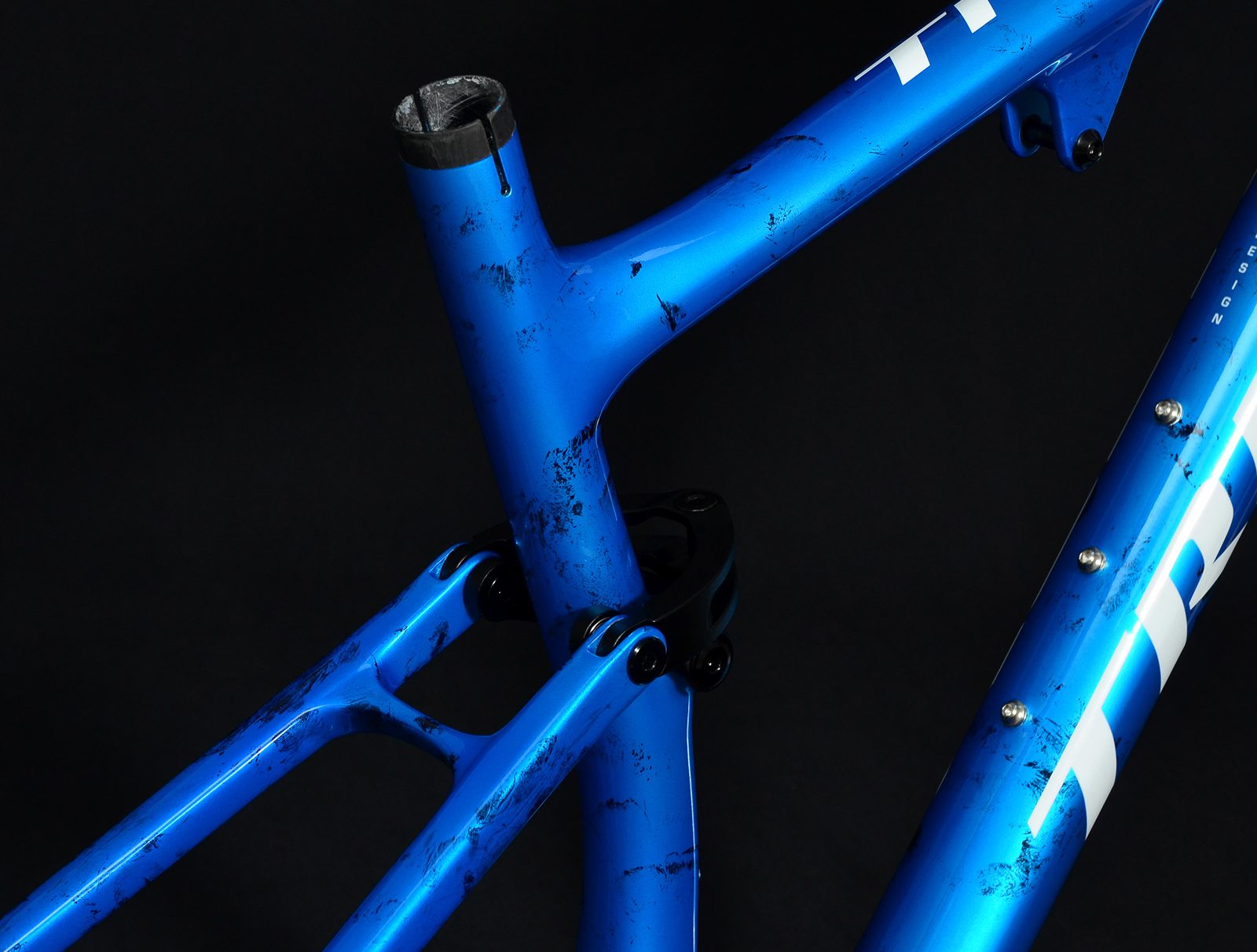
5. Weight and Value Proposition
The pursuit of lightness is central to XC. The TRIFOX Trail II Pro frame weighs approximately 1272g-1336g, placing it firmly in the competitive range for high-performance carbon frames. When evaluating price, consider the value offered by direct-to-consumer brands like TRIFOX, which provide cutting-edge technology and materials at a fraction of the cost of many major brands.
Conclusion: The TRIFOX Trail II Pro – A Paradigm of Intelligent DesignSelecting the perfect frame is a process of matching your riding ambitions with engineering excellence. By focusing on geometry, suspension design, carbon quality, and modern features, you can make an informed decision that will define your ride for years to come.
The TRIFOX Trail II Pro 29er XC Full Suspension Carbon Frame emerges as a standout option that exemplifies these principles:
Its modern geometry inspires confidence across diverse terrain.
The efficient four-bar suspension delivers traction without compromise.
The T800 carbon construction offers a sublime blend of lightness and strength.
Its future-proof features ensure compatibility with the best components on the market.
By using this guide and the Trail II Pro as a reference, you are equipped to choose a frame that will form the foundation of an exceptional mountain bike, ready to push the limits of speed and performance.

What makes a road bike frame truly popular? It's not just hype – it's the perfect blend of performance, value, and real-world usability. Trifox's X16 Disc Brake Carbon Frame consistently tops their charts, and for good reason. Let's dive into what makes this frame a standout choice for discerning riders:
Uncompromising Lightweight Performance: Crafted from high-modulus T800 carbon fiber, the X16 boasts an impressive frame weight hovering around 900g (size dependent). This translates directly to snappier acceleration, effortless climbing, and a lively, responsive ride that feels eager under power. It's pure road buzz without the penalty.
Disc Brake Dominance: Embracing the modern standard, the X16 features flat-mount disc brake compatibility. This means superior stopping power in all conditions – wet descents, tight corners, or emergency stops – offering consistent modulation and control that rim brakes simply can't match. Confidence is key to speed.
Stiffness Meets Comfort: Trifox engineers didn't just chase grams. The X16 features a stiff front triangle (head tube, down tube, bottom bracket) for razor-sharp handling and efficient power transfer when you stomp on the pedals. Yet, the carefully shaped thin seatstays and fork provide crucial vertical compliance, absorbing road buzz and reducing fatigue on longer rides. You get race-ready feedback without the harshness.
Modern, Versatile Geometry: The X16 strikes a brilliant balance. Its geometry leans towards aggressive (think shorter headtubes, longer reaches) for efficient power output and aerodynamic potential, yet remains accessible enough for spirited club rides and gran fondos. It’s a frame built for speed that doesn’t demand a pro-level contortion.
Smart, Rider-Focused Design:
Threaded Bottom Bracket (BB86): A massive win for reliability and home mechanics. No press-fit creaks here! Easy installation and long-term peace of mind.
Full Internal Cable Routing: Creates a sleek, aerodynamic profile while protecting cables and hoses from the elements. Looks pro, functions flawlessly.
Wide Compatibility: Accommodates electronic and mechanical groupsets, 28c+ tires (great for comfort/rough roads), and standard 27.2mm seatposts for tuning ride feel.
Why the X16 Resonates:
It delivers pro-level pedigree (lightweight carbon, advanced shaping, disc performance) at a direct-to-consumer price that makes high-performance cycling genuinely accessible. You're not paying for flashy marketing or dealer markups – just exceptional engineering focused on the ride.
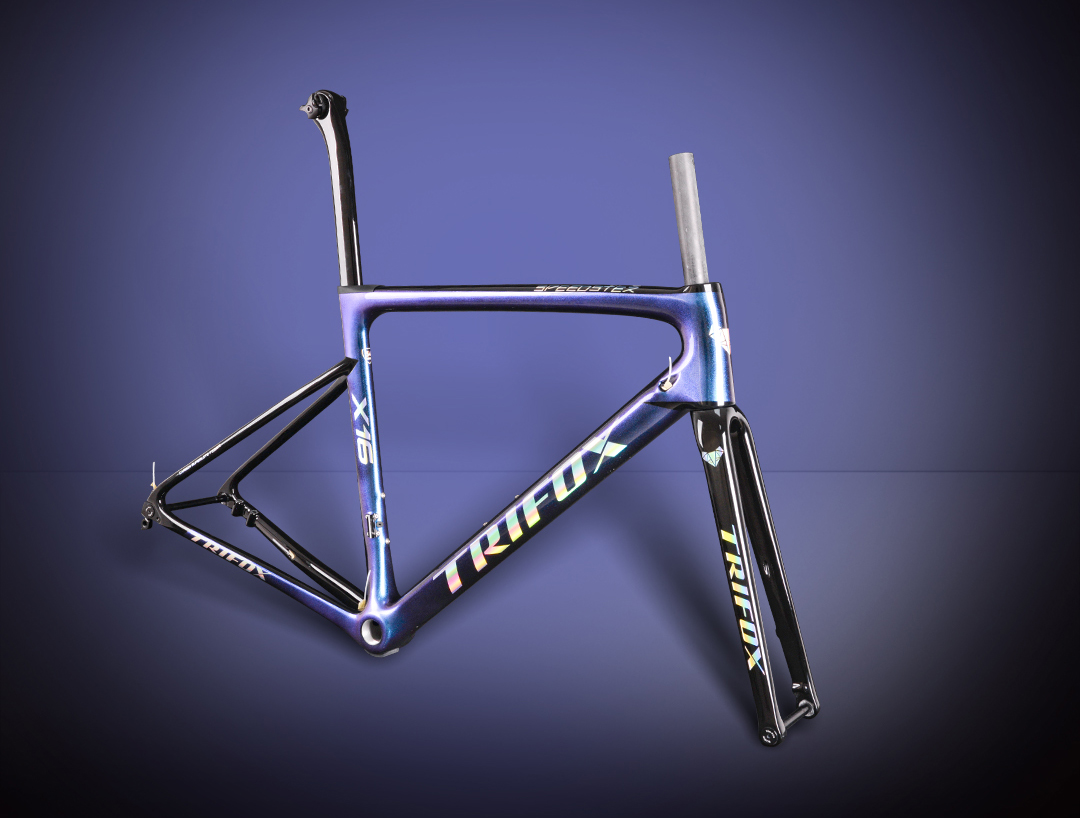
The Trifox X16 isn't just popular; it's popular for a reason. It masterfully combines the essential ingredients modern road riders crave: lightweight carbon efficiency, the confidence of disc brakes, a balanced blend of stiffness and comfort, and practical, reliable design – all wrapped up in a package offering outstanding value. If you're seeking a frame that punches far above its weight class and forms the foundation of a truly exciting road machine, the X16 is Trifox's testament to smart performance.
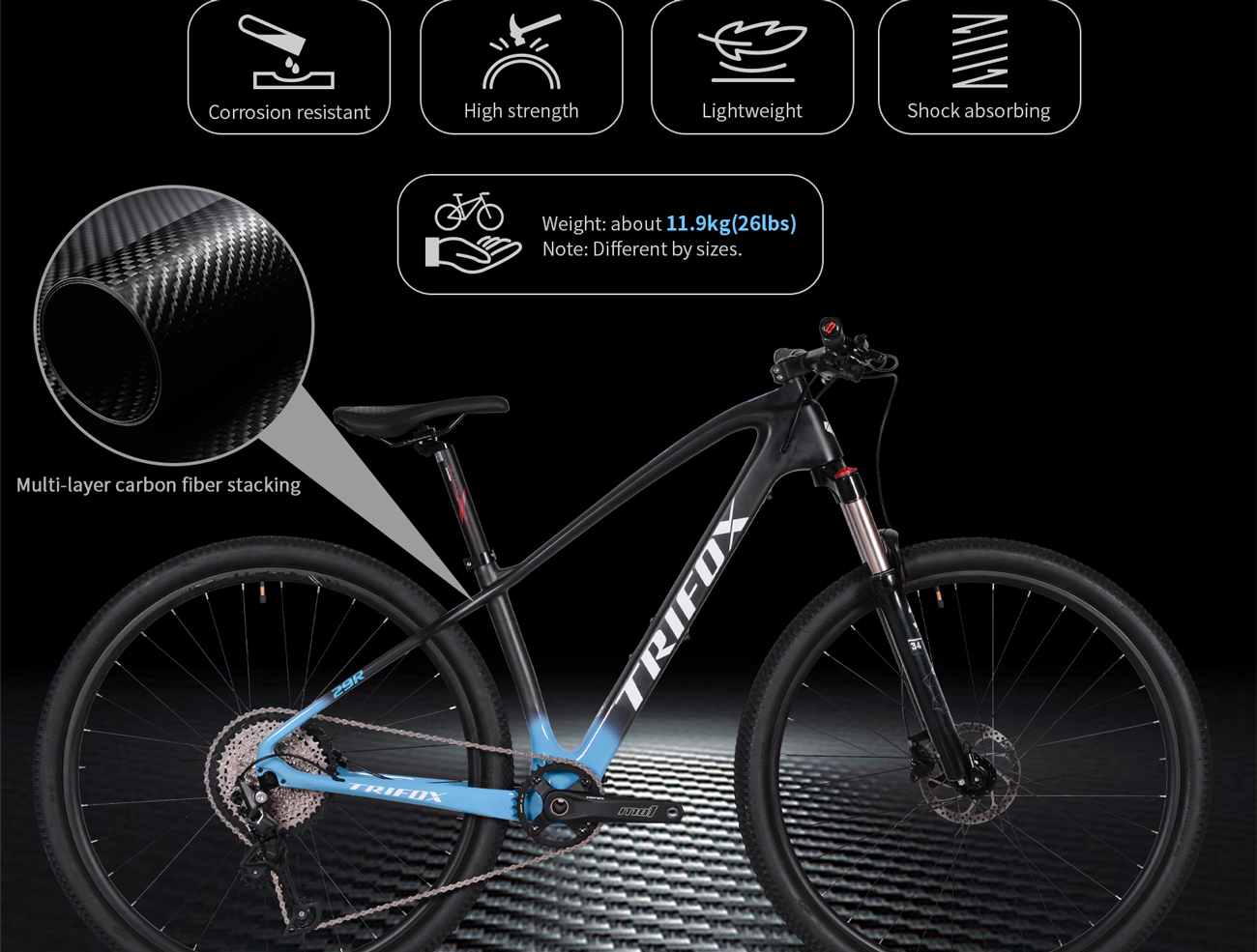
Think building a capable, lightweight hardtail requires breaking the bank? Think again. The sub-$250 frame market is hotter than ever, offering surprising performance for riders seeking value without sacrificing fun. We scrutinized options, and one standout shines: the Trifox MFM200 Carbon Hardtail Frame. Here’s why it’s a budget hero:
The Carbon Game-Changer (Yes, at $227!)
The MFM200 shatters expectations by delivering a full carbon fiber frame at an astonishing price point. Forget heavy steel or flexy aluminum – this frame offers the core benefits of carbon:
Ultralight Build: Weighing in around 1200g (size dependent), it sheds serious pounds compared to alloy frames at this price. That translates directly to easier climbing and a livelier, more responsive feel on every trail.
Stiffness for Speed: Carbon construction ensures excellent pedaling efficiency. Power transfer is direct, minimizing wasted energy when you stomp on the pedals, whether sprinting or grinding uphill.
Tuned Trail Compliance: While stiff laterally, carbon can offer subtle vertical flex. The MFM200’s design helps absorb smaller bumps and chatter, reducing fatigue on longer rides and rough sections, making it more capable than its price suggests.
Modern Geometry for Real Trails
Trifox didn't skimp on contemporary design:
Slack Head Tube Angle (~66-67°): Boosts confidence on descents, improving stability when things get steep or rough.
Steep Seat Tube Angle (~74-75°): Positions you efficiently over the pedals for better climbing traction and comfort.
Reach & Wheelbase: Balanced numbers provide a stable yet maneuverable ride suitable for aggressive trail riding and XC adventures.
Smart Build Compatibility
The MFM200 plays nice with widely available, affordable components:
Boost Hub Spacing (148x12mm rear): Ensures stiffness and compatibility with modern wheelsets.
Internal Cable Routing: Clean looks and protection for dropper posts and derailleurs.
Tapered Headtube: Fits modern, stiff forks for precise steering.
Threaded Bottom Bracket: A huge win for reliability and ease of maintenance – no creaky press-fits!
Value Verdict: The Trifox MFM200
Finding a new carbon frame under $230 feels almost unreal. The Trifox MFM200 delivers the core advantages of carbon – significant weight savings, efficient power transfer, and surprisingly good trail manners – wrapped in modern, capable geometry. While you might find minor finish differences compared to premium frames, the fundamental performance is undeniable.
Is it perfect? Consider:
Finish: Expect functional over flawless – cosmetics might be simpler.
Hardware: Bearings and bolts are adequate, but upgrading later is easy.
Build Cost: Remember, the frame is just the start! Factor in fork, drivetrain, wheels, etc.
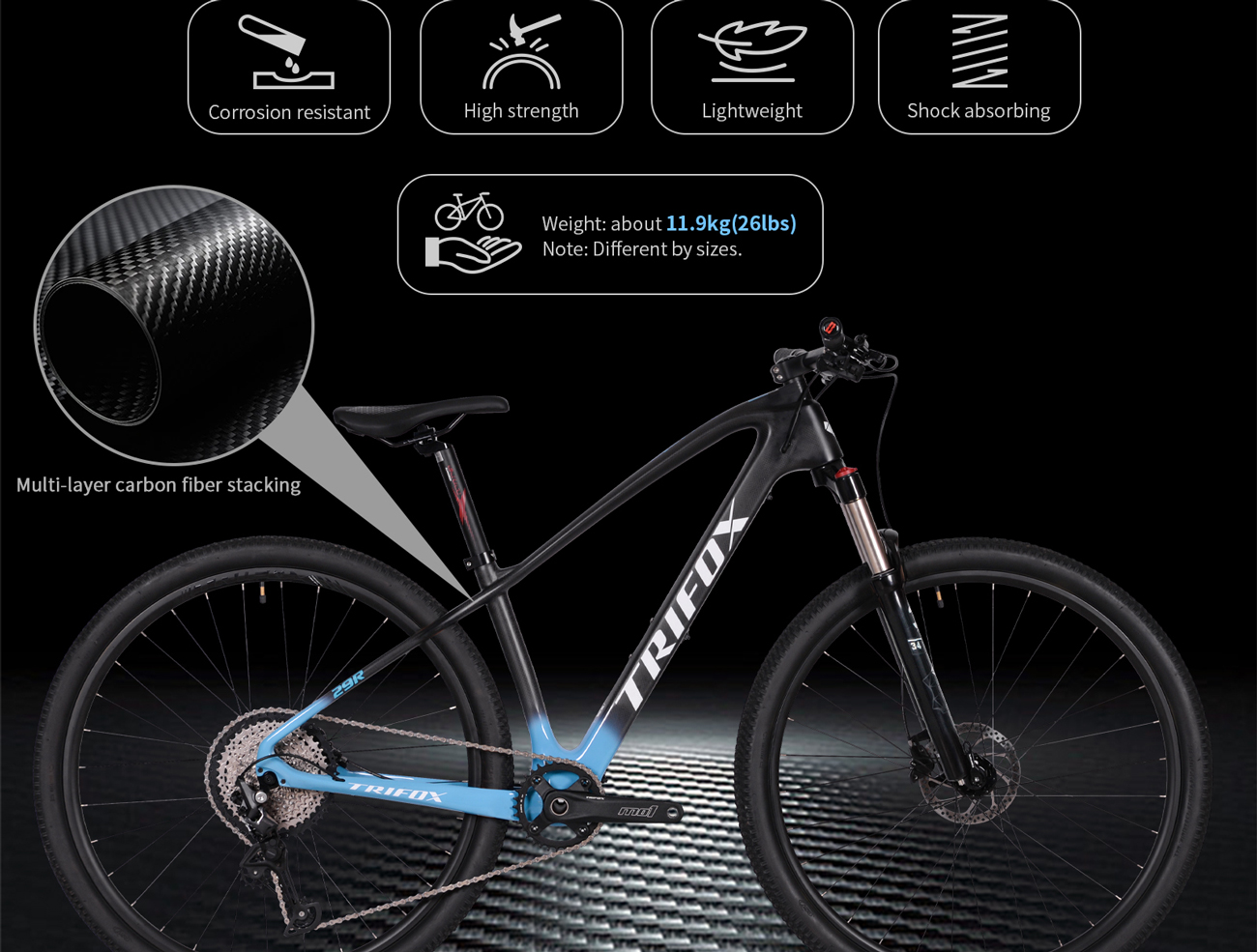
The Bottom Line:
For riders demanding a lightweight, efficient, and modern hardtail platform without blowing the budget, the Trifox MFM200 is a revelation. It proves you don't need $1000+ to get a frame that unlocks hardtail heroics. Pair it with smart component choices, and you’ve got a trail-taming machine that punches way above its weight class. Budget hardtails just leveled up!
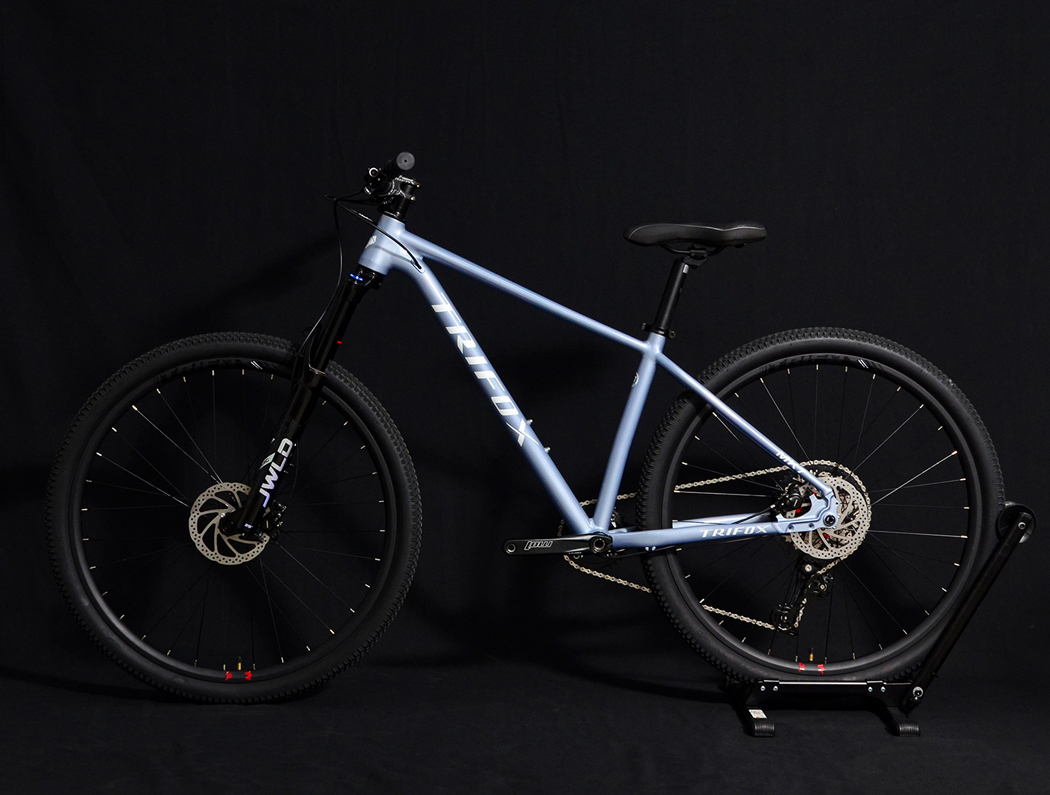
In an era of complex full-suspension rigs, the aluminium hardtail mountain bike holds a special, enduring appeal. It’s not about nostalgia; it’s about a distinct, exhilarating riding experience defined by purity, efficiency, and a direct connection to the trail that modern aluminium frames elevate perfectly.
Why Choose the Aluminium Hardtail?
- Unbeatable Efficiency: Every watt of your pedal power translates directly into forward motion. Aluminium frames offer fantastic stiffness, ensuring minimal energy loss. You feel faster, especially on climbs and flowing singletrack where acceleration is key.
- Trail Telepathy: Without rear suspension, you feel every root, rock, and contour. This direct feedback sharpens your skills, improves your line choice, and creates an incredibly immersive, connected ride. You learn to flow with the trail, not just float over it.
- Lively & Playful: Modern aluminium frames are surprisingly compliant, offering a lively, responsive feel. The hardtail design encourages popping off features, manualing, and flicking the bike around with agility – pure, unadulterated fun.
- Robust & Reliable: Aluminium is tough. It shrugs off rock strikes and minor crashes. Combine that with the inherent simplicity of a hardtail (fewer pivots, less maintenance), and you have a bike built for relentless trail duty and adventure, season after season.
- Incredible Value: You get serious performance and durability without the high cost and maintenance of rear suspension. This frees up budget for higher-quality components elsewhere.
The Modern Aluminium Hardtail: Evolved & Capable
The Trifox PeakTrail Xtreme MK7 exemplifies this allure. It’s not your grandad's rigid bike. Featuring:
- A lightweight, hydroformed aluminium frame with optimized tubing for strength and ride quality.
- Aggressive, modern geometry for confident descending and stability at speed.
- Premium suspension fork (like the Suntour Raidon) to smooth out the front end.
- High-performance drivetrain (Shimano SLX/XT) and powerful disc brakes for precise control.
Who Thrives on a Hardtail?
- Skill Builders: Learn proper technique and become a better rider.
- XC & Trail Racers: Maximize speed and efficiency.
- Value Seekers: Get top-tier performance without breaking the bank.
- Adventure Riders: Dependable, low-maintenance exploration machines.
- Riders Craving Connection: Those who want to truly feel the trail beneath them.
Ready to Embrace the Purity?
Experience the direct thrill and undeniable efficiency of a modern aluminium hardtail. The Trifox PeakTrail Xtreme MK7 delivers the perfect blend of performance, durability, and pure trail feedback. Rediscover why the hardtail remains a cornerstone of mountain biking.

Remember when mountain biking felt pure, agile, and incredibly fun? Before plus-sized tires and complex suspensions dominated, the 26-inch aluminium hardtail reigned supreme. And guess what? It still delivers an unbeatable blend of performance and accessibility!
Why Rediscover the 26er?
Unmatched Agility: Smaller wheels mean quicker steering, tighter cornering, and a more playful, flickable ride through technical singletrack. It feels like an extension of you.
Aluminium Advantage: Modern aluminium frames offer fantastic strength, durability, and a lively ride quality at a fraction of the cost of carbon. It’s tough enough for real trails.
Simplified Fun: Less complexity often equals more smiles. Hardtails are easier to maintain and let you feel the trail directly, improving skills.
Incredible Value: You get serious trail capability without the premium price tag of larger-wheeled or full-suspension bikes. Perfect for beginners or riders seeking a nimble, reliable second bike.
Modern Touches on a Classic:
The Trifox MK2 isn't stuck in the past! It features essential modern upgrades:
Disc Brakes: Reliable stopping power in all conditions, far surpassing old rim brakes.
21-Speed Shimano Tourney: Smooth, dependable shifting for tackling varied terrain.
Updated Geometry: Ensures confident handling on today's trails.
Who Wins with a 26-Inch Aluminium MTB?
New Riders: An affordable, manageable entry point into real mountain biking.
Trail Purists: Riders who love feeling connected to the trail and honing their skills.
Commuting & Adventure: A robust, versatile bike for mixed surfaces and urban exploration.
Anyone Seeking Value: Serious fun without serious debt.
Ready to Experience Classic Trail Thrills?
Don't underestimate the enduring appeal of a well-built 26-inch aluminium mountain bike. The Trifox MK2 26-inch Aluminium Mountain Bike perfectly captures this spirit – blending timeless agility, modern disc brakes, and incredible value. Rediscover the pure joy of nimble trail riding.

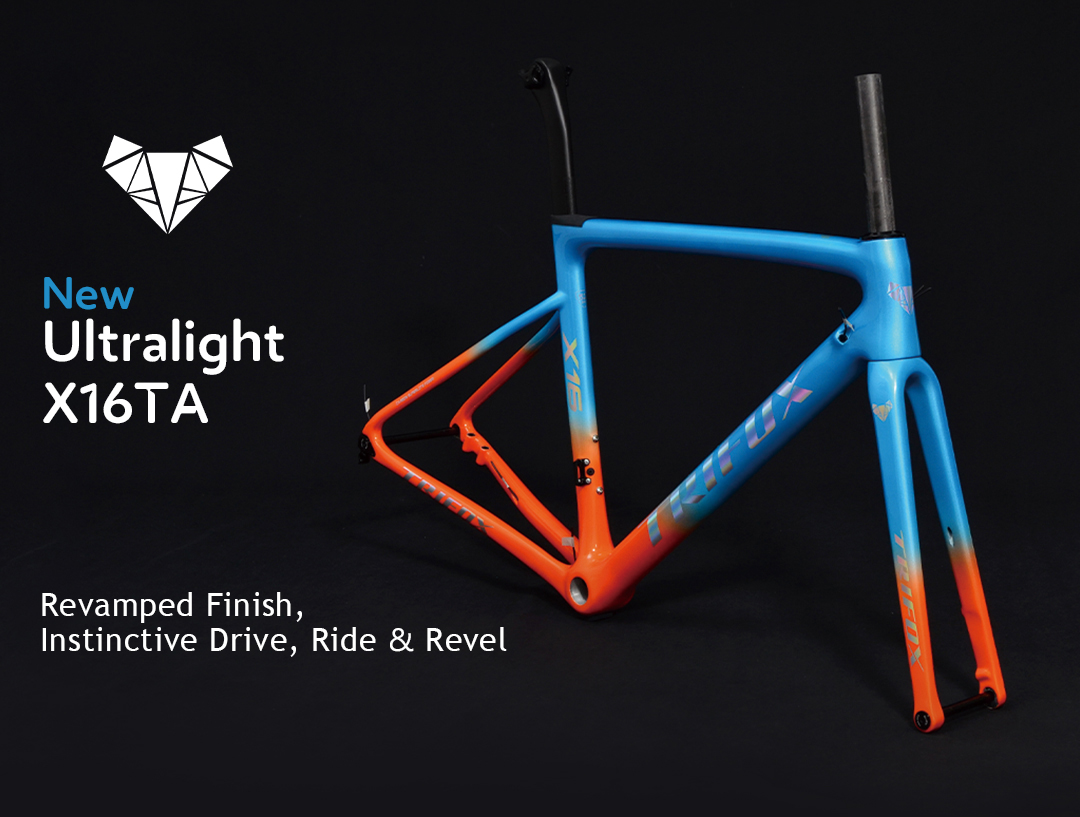
Forget marginal gains – shedding significant weight from your bike's core fundamentally revolutionizes your experience. A super light frame isn't just a number; it's the key to unlocking a new dimension of riding.
The most dramatic transformation? Climbing. Less mass means defying gravity requires drastically less effort. Every pedal stroke feels more efficient, translating directly to faster ascents and reduced fatigue. Hills become challenges to relish, not dread. You accelerate quicker, maintaining momentum with newfound ease.
But the magic extends beyond going up. A lightweight frame enhances handling profoundly. It's more responsive to steering inputs, making cornering sharper and more intuitive. The bike feels like an extension of your body, dancing beneath you with agility. This flickability boosts confidence on descents and technical sections.
Acceleration is where a super light frame truly shines. Whether launching from a stop sign or surging out of a corner, the reduced inertia means the bike leaps forward with minimal effort. It feels eager, alive, translating your power into speed instantaneously. You spend less energy overcoming inertia and more maintaining exhilarating velocity.
The overall ride feel becomes exhilaratingly direct. Road buzz and minor imperfections are communicated, but the frame's stiffness (often inherent in lightweight designs like carbon) ensures power transfer is immediate and precise. You feel connected, efficient, and incredibly fast.
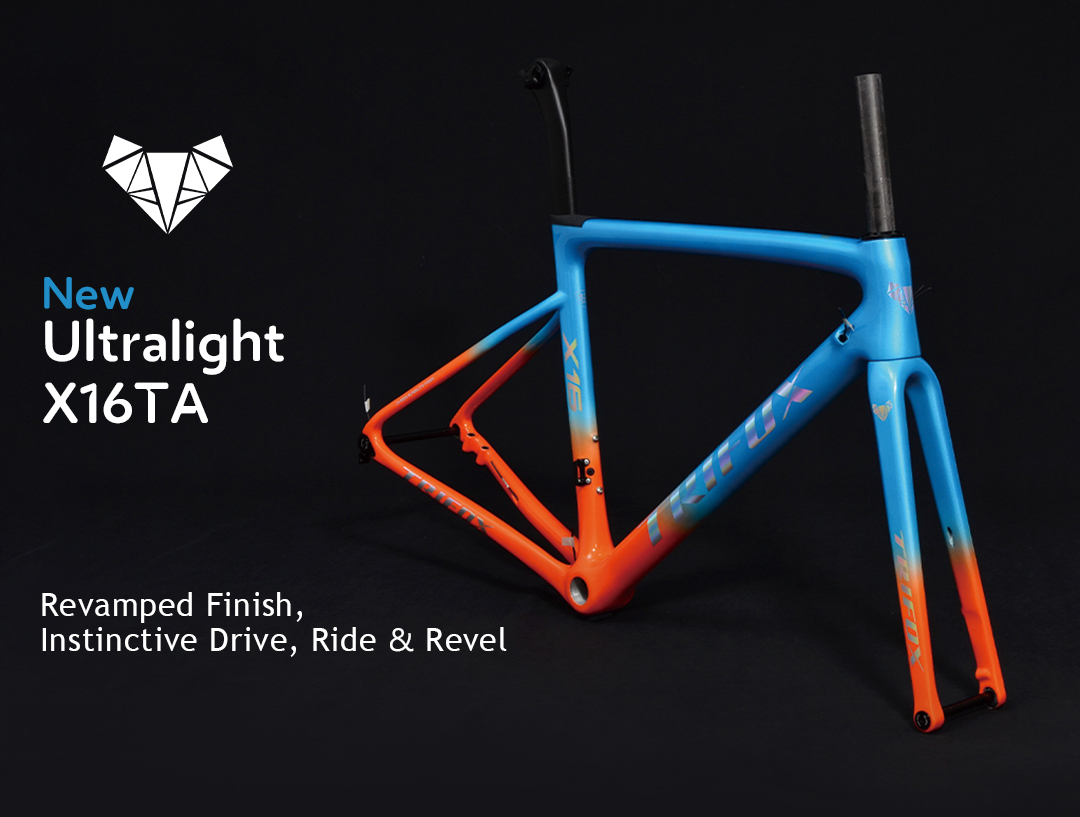
Experience this transformation: Ready to feel the climb vanish and the road come alive? The Trifox X16TA Disc Brake Lightweight Carbon Road Bike Frame embodies this revolution. Engineered for minimal weight and maximum performance, it's the foundation for your fastest, most responsive ride yet. Discover how a super light frame changes everything: Less weight, more ride.


























































